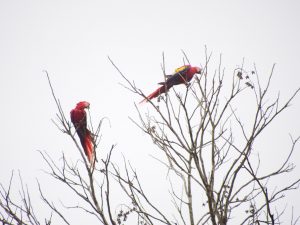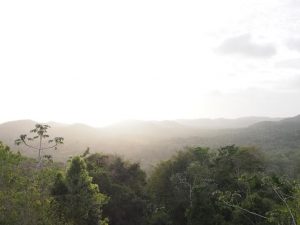Today began like any other day at Las Cuevas Research Station – with a 6:30 am breakfast. However, today was very different.
Rather than spending the morning in the field, my class and I spent it in a van. We departed from Las Cuevas and are en route to the airport.

Outside my window, I got a glimpse of the tall angiosperm trees that composed the rainforest transition suddenly to the pines characteristic of the mountain pine ridge ecosystem.
Further along, we stopped at a gift shop and a kitschy touristy restaurant. These served as reminders of why I am going to miss Belize so much. Belize is authentic, expressive, passionate, and in touch with reality. These attributes are rarities in the highly commercialize American culture with which I am so familiar.
We arrive at the airport, and I finally said goodbye to Belize, a country that I had had the privilege to explore the past two weeks.
Now I am back home. Like the trees of the rainforest that sharply transitioned into pine, I have to sharply transition from a tropical field biologist to an American college student. After all, I have meetings all day tomorrow and even more work the day after that.
I miss Belize already – the liveliness of the reefs, the vastness of the forest, the inhibition of the night sky, the friendliness of the people.
I know one day I will go back. I’m looking forward to it.




















